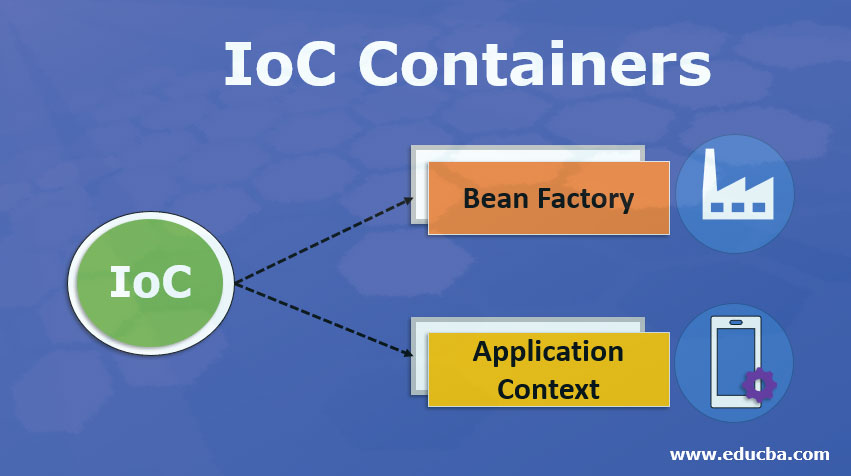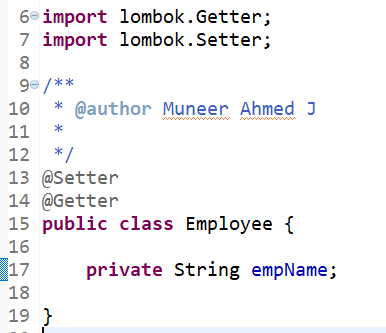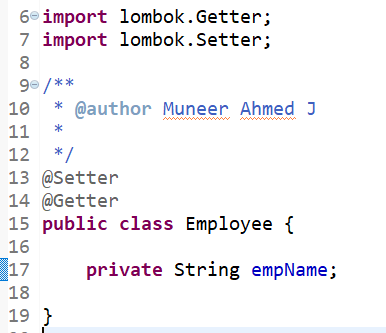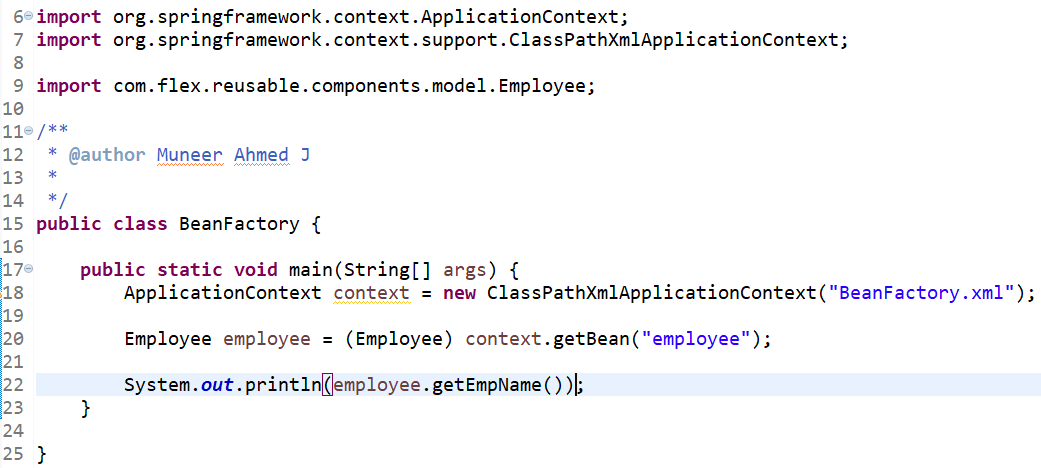Updated April 8, 2023

Introduction to IoC Containers
The following article provides an outline for IoC Containers. One of the most important parts of the Spring Core Framework is the Spring IoC Container. Spring IoC Container is mainly responsible for implementing Inversion of Control (IoC) i.e., to achieve loose coupling between the classes by creating the objects & injecting them dynamically during the run time.
Spring IoC Containers help in instantiating the class & creating the object, configuring the object, assembling and managing the dependencies between the objects. The information required for creating, configuring & assembling the objects is obtained by reading the XML Configuration file or scanning the Spring Java Annotations used in the project.
Architecture of IoC Container
From the above architecture diagram, we can interpret that the Spring Container consumes Configuration Metadata which is nothing but the XML file Configuration or Java annotations.
This Configuration Metadata contains information which defines:
- What are the Objects to be instantiated?
- What are the Objects to be configured & how to configure?
- How to assemble the Objects?
These objects will be a part of your Project’s Business Objects or DAO Objects. So, IoC Container instantiates, configures, assembles the objects at the time of starting up the application itself as well as manage the object life cycle from creation till destruction.
Types of IoC Containers
Spring Framework provides two types of IoC Containers.
- Bean Factory
- Application Context
1. Bean Factory
The Bean Factory, the root interface of the IoC container provides basic support for achieving loose coupling between the classes using Dependency Injection. It is defined under org.springframework.beans.factory. BeanFactory Interface. As the name suggests, Bean Factory is a place where the beans are manufactured & injected into the classes.
You may be wondering, what are Beans? Beans are nothing, but the Java Objects that are initialized by the Spring in it. So, any POJO classes or DAO classes act as a Spring Bean if it is configured to be instantiated by IoC Containers from the meta-information available in the XML configuration file or as a Java-based annotation in the project.
Scopes of Beans:
- Singleton: This is the default scope. As the name suggests, only one instance of the bean will be created for each container.
- Prototype: For each request, a new bean will be created.
- Request: It will be used in Web Application. For each HTTP request from the client, a new bean will be created.
- Session: For each HTTP Session, a new bean will be created.
How to Create a Bean Factory?
Let us see a real-time example of creating Bean Factory using XML based configurations.
Employee POJO class.
BeanFactory class for reading the XML Configuration using XmlBeanFactory.
BeanFactory.xml file for configuring the metadata for creating the bean objects by Spring Bean Factory.
Output:
Muneer Ahmed J
Methods of Bean Factory
There are six primary methods for Bean Factory.
- Boolean containsBean (String): This method compares the name of the bean instance available with the name passed as an argument. Returns true if matched else returns false.
- Object getBean (String): This method returns the available bean instance with the name passed as an argument. If the bean instance is not found, it throws NoSuchBeanDefinition Exception.
- Object getBean (String, Class): This method returns the available bean instance with the name passed as an argument & it will be cast to the Class passed as the second argument. If the bean instance is not found, it throws NoSuchBeanDefinition Exception & if the bean cannot be cast to the provided class, it throws BeanNotOfRequiredType Exception.
- Class getType (String name): This method will return the Class of the bean passed as an argument.
- Boolean singleton (String): This method will check if the bean name passed as an argument is in Singleton scope or not. Return true if Singleton else returns false.
- String[] getAliases (String): This method returns a single or array of aliases for the passed bean name, if available.
2. Application Context
Application Context is the same as Bean Factory as it is built upon BeanFactory Interface only, but it provides a few more extra functionalities such as:
- Simple Integration with Spring Framework’s AOP.
- Message resource handling in Internationalization (i18N).
- Event propagation.
- Most importantly WebApplicationContext for Web Applications.
It is defined under org.springframework.context.ApplicationContext Interface.
As you can see, Application Context is built over Bean Factory and it also provides a few more additional features, it is mostly recommended over Bean Factory.
How to Create Application Context?
Let us see a real-time example of creating Application Context using XML based configurations.
Employee POJO class.
BeanFactory class for reading the XML Configuration using Application Context.
BeanFactory.xml file for configuring the metadata for creating the bean objects by Spring Bean Factory.
Output:
Muneer Ahmed J
Types of Application Context
There are three different types of Application Contexts.
- FileSystemXmlApplicationContext
- ClassPathXmlApplicationContext
- WebXmlApplicationContext
Advantages of IoC Containers
Given below are the advantages mentioned:
- Spring IoC Containers helps in instantiating, configuring & assembling the Objects provided in the XML Configuration files or Java Annotations.
- Spring IoC Container helps in managing the Spring Bean Life Cycle i.e., right from instantiation till destruction.
- Spring IoC Containers provide support for Inversion of Control (IoC).
- It provides a factory of beans for dynamically binding them at the time of starting/booting up the application.
- It helps in achieving loose coupling.
- It provides easy support for creating Web Application using the WebApplication Context.
- It minimizes the amount of code by avoiding boilerplate coding.
- It provides support for Eager instantiation & lazy loading of Services.
- It makes Unit Testing easy by allowing the developers to inject the Mock Objects.
Conclusion
From this article, we have done a deep dive into the architecture, importance, and role of IoC containers. We have also gone through the different types of IoC Containers and its advantages with the real-time example on XML based configurations.
Recommended Articles
This is a guide to IoC Containers. Here we discuss the introduction, architecture of IoC containers, along with the types and advantages. You can also go through our other suggested articles to learn more –







